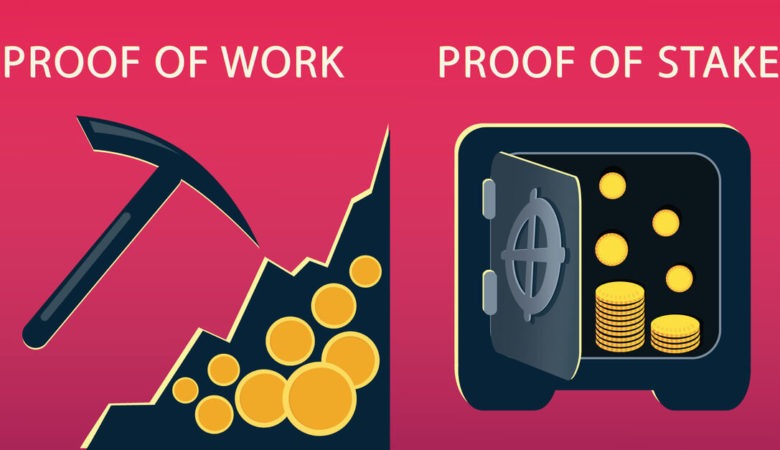Create a Token by Using Specialized Platforms – Easiest way
An easiest way of creating a crypto is by using the services of platforms that give you the tools to launch your own token. This option is more feasible for those who are looking to quickly launch a crypto, as it requires less development time, spending, and maintenance.
When you build a token on top of an existing blockchain, such as Ethereum, your token uses the secure network, decentralized architecture, and implemented consensus mechanisms of the blockchain.
Tokens function similarly to smart contracts and can be programmed to represent various items or have different digital services. Tokens are usually launched in ICOs of Security token offering (STO), to help projects and startups get the funds they require for their operations.
How to Create Your Own Cryptocurrency?
Build Your Own Blockchain or Fork
- Select Your Source Code.
You can choose from various Open Source Blockchains. You can fork Bitcoin’s or Litecoin’s blockchain by downloading them from Github.
It is more recommended you to use open-source technology to create your own blockchain, as developing a block-chain from scratch takes a great deal of time and money.
- Download and Install your Blockchain on a Live Server.
- Access your server using SSH via putty as administrator (root access) to install the blockchain directly on a Live server.
- Run the following commands one by one (we will be using Multichain in our example).
cd /tmp
wget https://www.multichain.com/download/multichain-1.0.4.tar.gz
tar -xvzf multichain-1.0.4.tar.gz
cd multichain-1.0.4
mv multichaind multichain-cli multichain-util /usr/local/bin
- Now we can go on to create a blockchain by running the following commands:
multichain-util create your_chain’s_name
- Modify the Chain.
Before starting your chain, you will have to make some adjustments according to what you need in your chain to create your own cryptocurrency, as blockchain cannot be changed after they get started.
Below we will be featuring some of the most important parameters that should be modified.
Access your server using SSH via putty as administrator and run the command:
nano ~/.multichain/ your_chain’s_name/params.dat
Here are some of the parameters that you should modify:
- chain-description;
- chain-is-testnet;
- first-block-reward (the number of coins produced when mining a block);
- anyone-can-connect (set it to true);
- anyone-can-send (set it to true);
- anyone-can-receive (set it to true).
After making the alterations, save the params.dat file.
- Start the blockchain.
Access your server as root (administrator) and run the following commands to start your blockchain:
multichaind your_chain’s_name -daemon
With this command, you will produce the First Block, which is known as The Genesis Block.
- Test Your Cryptocurrency
Access server using SSH via putty as administrator and run the following command:
multichain-cli your_chain’s_name
The command allows you to get into the interactive mode.
Run getinfo to check the chain’s details.
Use a Token Platform
- Select a Consensus Mechanism
Consensus mechanisms, or mining protocols, represent the code that handles how new tokens are issued and verified the validity of transactions before adding them to the block. The most popular consensus protocols are PoW, PoS, but of course, there are many others you can look into.

- Select a Platform That Supports Token Creation
Based on what consensus mechanism you’ve selected, it’s time to choose your platform.
By far the most popular is the Ethereum blockchain, with the ERC-20 standard having been used for most of the tokens issued so far. You can also opt for other user-friendly platforms that will walk you through the process of creating your own cryptocurrencies, such as NEO, EOS, NEM, Waves (WAVES), Hyperledger Fabric, IBM blockchain, HydraChain, BlockStarter, and IOTA.
- Customize the Nodes and Internal Architecture of Your Chain
Establish what functionalities will your blockchain have and customize your nodes to fit those needs. From these nodes, you can set your permissions (private or public), hardware requirements, etc. This part is similar to when you modify the parameters of a forked chain.
Parameters you should take into consideration are the address format, block reward, etc. Be sure to set them before you run your blockchain for the first time as there is no possibility to make any changes after that.
- Integrate APIs
You might not have pre-built APIs into certain platforms, but there are third-party blockchain API providers, such as Colu, Bitcore, BlockCypher, ChromaWay, Gem, and Tierion.
- Create an Interface
Your cryptocurrency will now need an interface that will allow end-users to check out your blockchain. You need to make sure you will have to configure the web, FTP servers, and external databases, and the other front-end and back-end programming in order to allow for future upgrades.
The graphical interface should be easy to navigate, display blockchain details clearly, and it won’t hurt if it’s also aesthetic, although most crypto interfaces focus on simplicity.

- Establish the Legality of Your Crypto
Before launching your crypto out into the work, first, make sure that it is compliant with the laws and cryptocurrency regulations of the country or region you want to make it available.
- Russia to Slap a 15% Tax on Crypto Gains – The Bear Wants Its Share - November 20, 2024
- 70% of Airdrop Tokens Are Profitless—Here’s Why Your Freebies Might Be Worthless - November 19, 2024
- The Most Important Cryptocurrency News of November 14, 2024 - November 15, 2024


![BingX Exchange: A Detailed Guide to Using, Trading, and Maximizing Features in [current_date format=Y] 9 BingX Exchange: A Detailed Guide to Using, Trading, and Maximizing Features](https://cryptheory.org/wp-content/uploads/2024/11/4-5-350x250.jpg)














![BingX Exchange: A Detailed Guide to Using, Trading, and Maximizing Features in [current_date format=Y] 24 BingX Exchange: A Detailed Guide to Using, Trading, and Maximizing Features](https://cryptheory.org/wp-content/uploads/2024/11/4-5-120x86.jpg)





